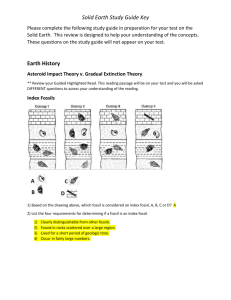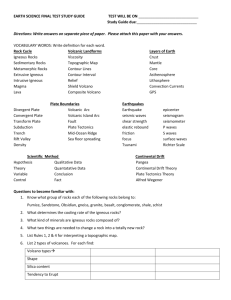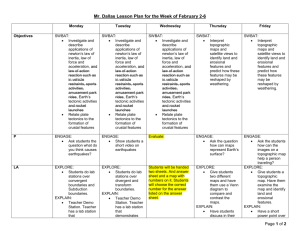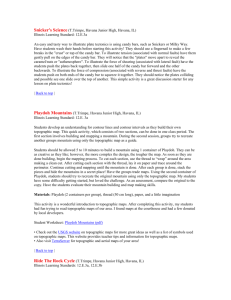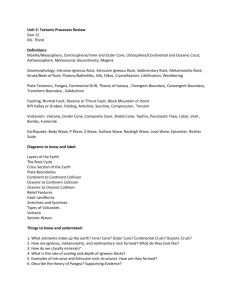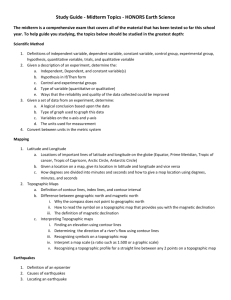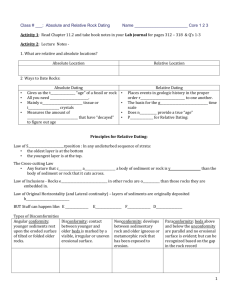Review Topics for Honors Earth Science Final 2012 To prepare for
advertisement
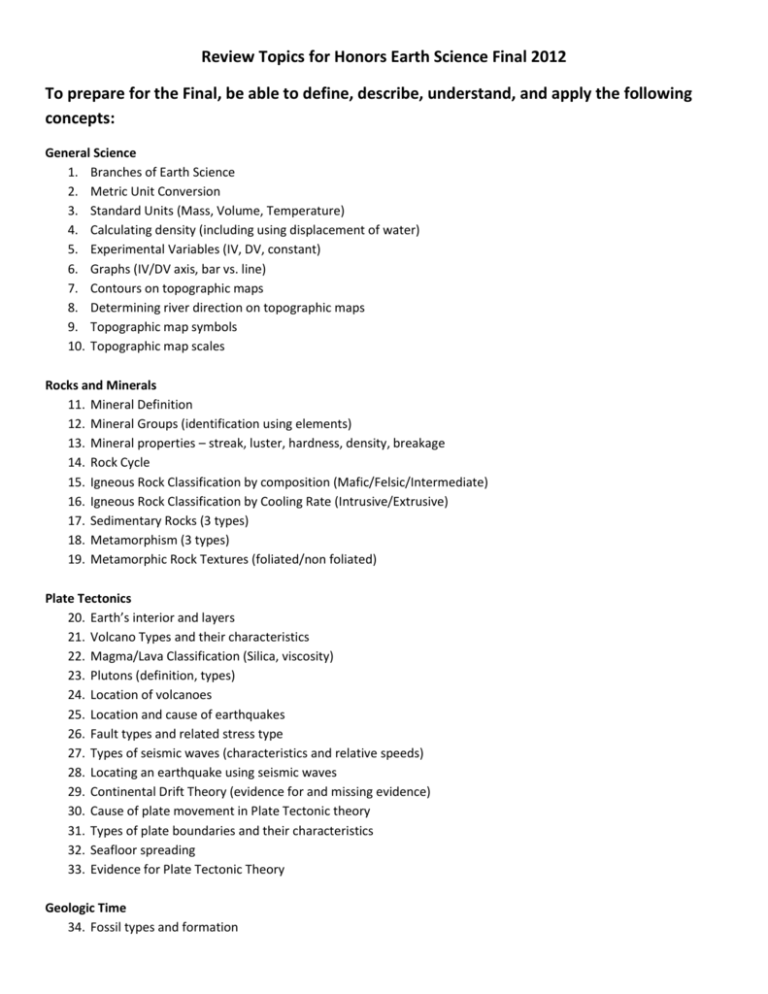
Review Topics for Honors Earth Science Final 2012 To prepare for the Final, be able to define, describe, understand, and apply the following concepts: General Science 1. Branches of Earth Science 2. Metric Unit Conversion 3. Standard Units (Mass, Volume, Temperature) 4. Calculating density (including using displacement of water) 5. Experimental Variables (IV, DV, constant) 6. Graphs (IV/DV axis, bar vs. line) 7. Contours on topographic maps 8. Determining river direction on topographic maps 9. Topographic map symbols 10. Topographic map scales Rocks and Minerals 11. Mineral Definition 12. Mineral Groups (identification using elements) 13. Mineral properties – streak, luster, hardness, density, breakage 14. Rock Cycle 15. Igneous Rock Classification by composition (Mafic/Felsic/Intermediate) 16. Igneous Rock Classification by Cooling Rate (Intrusive/Extrusive) 17. Sedimentary Rocks (3 types) 18. Metamorphism (3 types) 19. Metamorphic Rock Textures (foliated/non foliated) Plate Tectonics 20. Earth’s interior and layers 21. Volcano Types and their characteristics 22. Magma/Lava Classification (Silica, viscosity) 23. Plutons (definition, types) 24. Location of volcanoes 25. Location and cause of earthquakes 26. Fault types and related stress type 27. Types of seismic waves (characteristics and relative speeds) 28. Locating an earthquake using seismic waves 29. Continental Drift Theory (evidence for and missing evidence) 30. Cause of plate movement in Plate Tectonic theory 31. Types of plate boundaries and their characteristics 32. Seafloor spreading 33. Evidence for Plate Tectonic Theory Geologic Time 34. Fossil types and formation 35. Relative Dating (Laws of superposition, cross-cutting, and inclusions) 36. Absolute Dating (Radioactive dating – parent/daughter isotope ratios) 37. Geologic Time Scale (Eras and major events) Meteorology 38. 39. 40. 41. 42. 43. 44. 45. Composition of the Atmosphere (2 main gases, ozone) Layers of the Atmosphere Forms of Energy Transfer (Conduction, Convection, Radiation) Clouds (Formation, types) Properties of the Atmosphere (Temperature, Air Pressure, Dew Point, Relative Humidity) Air Masses - properties and source regions (mT, cT, mP, cP, A) Wind Systems – (Polar Easterlies, Prevailing Westerlies, Trade Winds) Coriolis effect Oceanography 46. Ocean Water Density (based on salinity and temperature) 47. Tides 48. Ocean Currents (surface, density/deep ocean) Astronomy 49. Formation of the moon (Impact Theory) 50. Formation of the solar system (Nebular Theory) 51. Formation and evolution of the universe (Big Bang Theory) 52. Solar system (order and major characteristics of planets, asteroid belt, oort belt, Kuiper Belt) 53. Moon Phases 54. Cause of seasons 55. Parallax (definition and use) 56. Star temperature and relationship to color 57. H-R Diagram 58. Star life cycles for low, medium(like our sun), and high mass stars 59. Evidence for an expanding universe (Doppler effect and red-shift) 60. Kepler’s laws for planetary motion 61. Models of the solar system (Kepler, Copernicus, and Ptolemy) 62. Eclipses (Solar and Lunar) 63. Galaxies (Types, the Milky Way)


